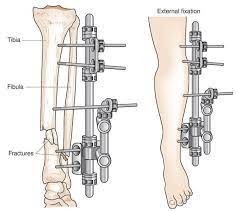A patient with sepsis has a BP of 70/46 mm Hg, pulse of 136 beats/min, respirations of 32 breaths/min, temperature of 104°F, and blood glucose of 245 mg/dL. Which intervention ordered by the health care provider should the nurse implement first?
Give 0.9% Sodium Chloride fluid bolus.
Give Pantoprazole (Protonix 40 mg IV push dally.
Give Acetaminophen (Tyler) 550 mg rectally.
Give rapid acting insulin per sliding scale.
The Correct Answer is A
The patient's vital signs indicate signs of septic shock, including low blood pressure (70/46 mm Hg), tachycardia (136 beats/min), and tachypnea (32 breaths/min). The patient also has a high temperature of 104°F, indicating a fever. These findings suggest a systemic response to an infection that is leading to inadequate tissue perfusion.The initial treatment for septic shock includes fluid resuscitation to improve blood pressure and tissue perfusion. A fluid bolus of 0.9% Sodium Chloride (normal saline) is commonly used to restore intravascular volume in septic shock. It helps to increase blood pressure, improve organ perfusion, and stabilize the patient's condition.
The other interventions, such as administering Pantoprazole (Protonix) for gastrointestinal protection, giving Acetaminophen (Tylenol) for fever control, or administering rapid-acting insulin per sliding scale for hyperglycemia, are important aspects of care but should be implemented after the initial fluid resuscitation. The priority at this moment is to address the patient's hypotension and inadequate tissue perfusion through the administration of fluid bolus.
Nursing Test Bank
Naxlex Comprehensive Predictor Exams
Related Questions
Correct Answer is C
Explanation
Pin site care is essential to prevent infections and other complications associated with external fixation devices. The nurse should instruct the patient to clean the pin insertion sites daily with a sterile saline solution or as per healthcare provider's instructions. The patient should also observe for signs of infection, such as redness, swelling, warmth, and drainage, and report any concerns to the healthcare provider.
Assessing the skin under the foam boot twice daily is not specific to external fixation devices, and it may not be relevant to this patient's care plan. The nurse should focus on teaching the patient about external fixation device care specifically.
Taking prophylactic antibiotics before any dental work for the rest of your life is not relevant to external fixation devices or right lower leg fractures. It is a recommendation for patients with certain heart conditions who may be at risk of developing infective endocarditis during dental procedures.
Removing the external fixator for the shower is not recommended as the device should be kept dry to prevent infections. The nurse should instruct the patient to cover the device with a waterproof dressing or plastic bag during showering to protect it from getting wet.

Correct Answer is A
Explanation
Acute renal failure is characterized by a sudden decline in kidney function, resulting in the inability of the kidneys to adequately filter waste products and maintain fluid and electrolyte balance. Monitoring urine output is essential in assessing kidney function and determining the severity of renal failure. A decrease in urine output or anuria may indicate worsening renal function and the need for immediate interventions.
Assessing electrolyte levels, such as sodium, potassium, calcium, and phosphorus, is crucial because renal failure can disrupt the balance of these electrolytes in the body. Imbalances can lead to complications such as electrolyte abnormalities, cardiac dysrhythmias, and neuromuscular disturbances. Prompt identification and management of electrolyte imbalances are essential in preventing further complications and supporting optimal patient outcomes.
Whether you are a student looking to ace your exams or a practicing nurse seeking to enhance your expertise , our nursing education contents will empower you with the confidence and competence to make a difference in the lives of patients and become a respected leader in the healthcare field.
Visit Naxlex, invest in your future and unlock endless possibilities with our unparalleled nursing education contents today
Report Wrong Answer on the Current Question
Do you disagree with the answer? If yes, what is your expected answer? Explain.
Kindly be descriptive with the issue you are facing.
